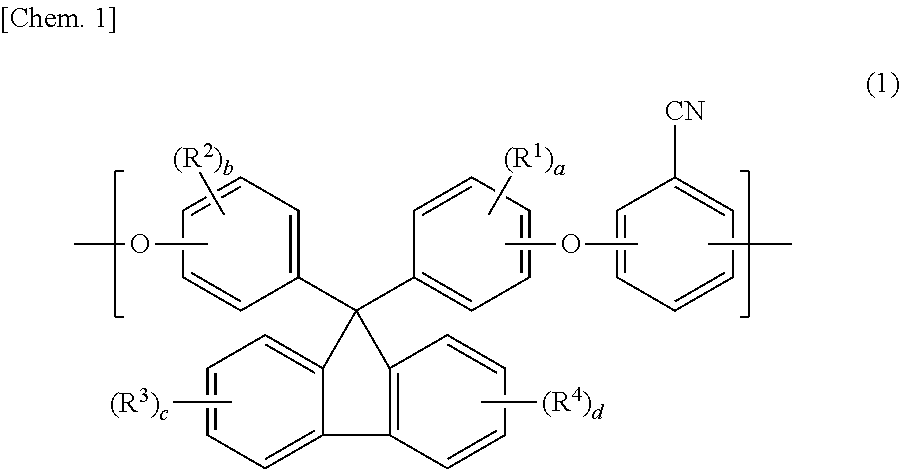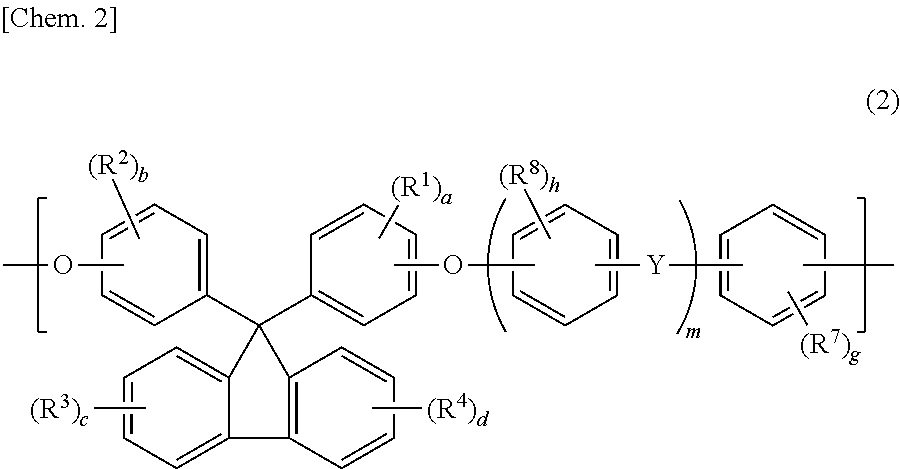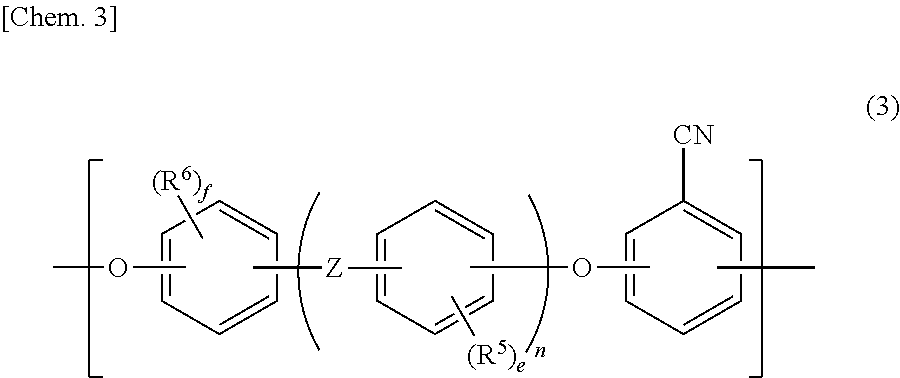Optical filter and imaging device comprising the same
a technology applied in the field of optical filters and imaging devices, can solve the problems of low glass transition temperature and insufficient heat resistance of these resins, and achieve the effects of high heat resistance, reduced retardation, and improved heat resistan
- Summary
- Abstract
- Description
- Claims
- Application Information
AI Technical Summary
Benefits of technology
Problems solved by technology
Method used
Image
Examples
example 1
[0221]35.12 g (0.253 mol) of 2,6-difluorobenzonitrile (hereinafter also referred to as “DFBN”), component (A); 70.08 g (0.200 mol) of 9,9-bis(4-hydroxyphenyl)fluorene (hereinafter also referred to as “BPFL”) and 5.51 g (0.050 mol) of resorcinol (hereinafter also referred to as “RES”), component (B); 41.46 g (0.300 mol) of potassium carbonate; 443 g of N,N-dimethyl acetamide (hereinafter also referred to as “DMAc”); and 111 g of toluene were added to a 3 L four-neck flask. Then, a thermometer, a stirrer, a three-way cock with a nitrogen introducing tube, a Dean-Stark tube, and a cooling tube were attached to the four-neck flask.
[0222]Next, the flask was purged with nitrogen and, thereafter, the resultant solution was reacted for 3 hours at 140° C. The generated water was constantly removed via the Dean-Stark tube. The temperature was raised gradually to 160° C. after the generation of water ceased and the solution was reacted at this temperature for 6 hours.
[0223]After the solution w...
example 2
[0227]Other than using 11.41 g (0.050 mol) of 2,2-bis(4-hydroxyphenyl)propane instead of the 5.51 g of RES, Example 2 was carried out the same as Example 1. Properties of the obtained polymer and evaluation film are shown in Table 1.
example 3
[0228]Other than using 78.84 g (0.225 mol) of BPFL and 8.41 g (0.025 mol) of 2,2-bis(4-hydroxyphenyl)-1,1,1,3,3,3-hexafluoropropane instead of 70.08 g of BPFL and 5.51 g of RES as the component (B), Example 3 was carried out the same as Example 1. Properties of the obtained polymer and evaluation film are shown in Table 1.
PUM
 Login to View More
Login to View More Abstract
Description
Claims
Application Information
 Login to View More
Login to View More - R&D
- Intellectual Property
- Life Sciences
- Materials
- Tech Scout
- Unparalleled Data Quality
- Higher Quality Content
- 60% Fewer Hallucinations
Browse by: Latest US Patents, China's latest patents, Technical Efficacy Thesaurus, Application Domain, Technology Topic, Popular Technical Reports.
© 2025 PatSnap. All rights reserved.Legal|Privacy policy|Modern Slavery Act Transparency Statement|Sitemap|About US| Contact US: help@patsnap.com



